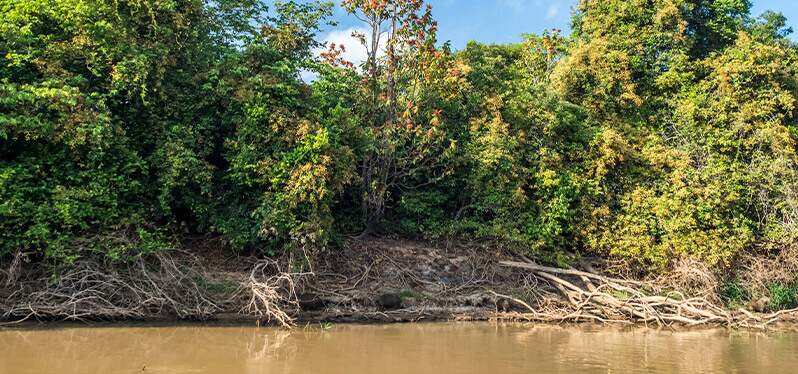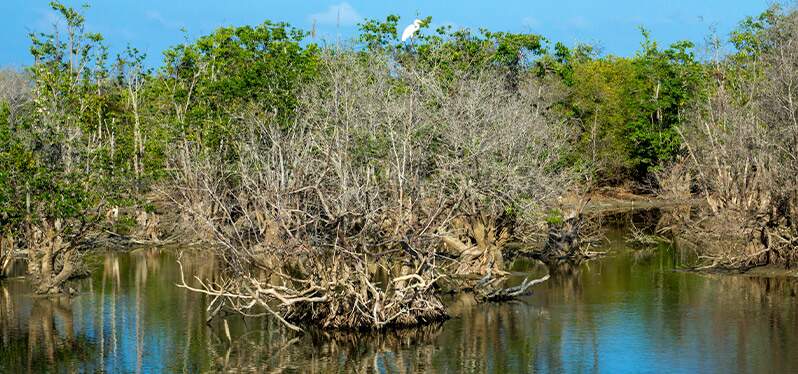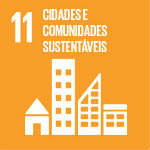Posted in: 07/26/2021
Sometimes underestimated in the agendas of ecosystem preservation and restoration, mangroves play an essential role in the environmental balance and in fighting climate change. For this reason, more than ever, the United Nations (UN) has emphasized the environmental and economic benefits of restoring these ecosystems.
Through the proposed United Nations Decade of Ecosystem Restoration (2021 to 2030), the UN has been supporting planting campaigns in countries with extensive mangrove regions, such as Pakistan, for example. The country, which was the official host of this year’s World Environment Day, has committed to planting 10 billion trees over 5 years, especially in mangrove regions.
The Pakistani challenge, and the change already taking place there, has also been seen in other countries. Recently, communities in Nigeria, one of the largest mangrove territories in Africa, mobilized to plant more than 10,000 seedlings and develop a community management plan for their mangroves.
Awareness of the emergency to restore the mangroves came with the threat of flooding. Deforestation, due to the demand for wood, has caused the devastation of the trees. The region has lost part of the natural defenses offered by the mangroves, since this ecosystem has the capacity to absorb large amounts of water, reducing the flow and risk of flooding, and acting as a natural barrier to flooding.
The two previous examples demonstrate the importance of putting into practice initiatives to stop the destruction, in addition to starting, as soon as possible, the recovery and preservation processes.
According to the United Nations Educational, Scientific, and Cultural Organization (UNESCO), mangroves are essential for the development and maintenance of life of communities in coastal regions, being one of their main sources of livelihood. According to the Organization, 120 million people in the world depend on mangroves for their livelihood.
The ecosystem services from mangroves are valued at $1.6 billion per year. This includes the “natural supply of animals caught for human consumption and participation in the ecological balance of coastal communities,” according to UNESCO.
Protection against natural disasters, as we saw earlier, is also a point in favor of the ecosystem. The prevention and mitigation of the coastal erosion process caused by waves and storms helps to avoid flooding and the environmental tragedies that can be caused by them.

But one of their most relevant functions concerns not only their local benefits, but the global one: mangroves are extremely important in the fight against global warming and, consequently, against climate change. With the capacity to store 3 to 5 times more carbon than rainforests, mangroves help to balance the planet’s natural conditions.
It is worth remembering that recently it was reported in the scientific journal Nature that fires and deforestation have transformed the Amazon into a source of carbon gas release, emitting 0.29 billion tons per year more than it can absorb, a fact that only demonstrates how mangroves are more necessary than ever to collaborate in the process of removing carbon from the atmosphere.
According to studies by the United Nations Environment Programme (UNEP), 67% of the planet’s mangroves have been lost or degraded by uncontrolled agriculture and aquaculture, logging, coastal development, pollution, and climate change.
The result is worrisome because, according to the study, mangroves are highly productive and preserve great diversity, in addition to the characteristics already mentioned, such as the ability to reduce the amount of carbon in the atmosphere and decrease by 39% the chances of annual flooding.
Therefore, all over the world, projects and governments are committed to protect and restore their areas. They rekindle hope that this valuable ecosystem will not fulfill the prediction made by UNESCO that in the next 100 years all unprotected mangroves will disappear.
You can find some of these projects on the website of the Global Mangrove Alliance, with the goal of increasing the global area of mangroves by 20% from their current size by 2030.
Brazil has great prominence when it comes to its mangroves. Since 2012, Synergia has been active in the recovery of threatened coastal ecosystems in Brazil, supporting the balance of human activities and local development with the preservation of biomes, proving that it is possible to ensure a balanced relationship between communities, economic development and the environment. Learn a little about this work through the case study Ethnocultural Rescue Program of the Quilombola Communities.
According to the Atlas of Mangroves of Brazil, released in 2018 by the Chico Mendes Institute for Biodiversity Conservation (ICMBio), the country has approximately 14,000 square kilometers of mangroves off its coast. The vastness of the ecosystem makes it the second largest country in the world in terms of mangroves.

Among the data presented in the ICMBio report, we can highlight:
Excerpts taken, in full, from the Atlas of the Mangroves of Brazil, 2018.
It is important to remember that the ICMBio report was released in 2018, and it is still the main source of information about mangroves in Brazil. However, since then, the ecosystem has suffered from repeated decisions that weaken the measures to preserve the areas and favor the degradation of the ecosystem in the national territory.
As we have seen, environmental preservation alone will not be able to avoid a major collapse in the planet’s productive systems, and this includes mangroves and all ecosystems. According to the UN, countries must also make a serious commitment to restoration to ensure the health of the environment.
This is the theme of the Broadcast “Socio-environmental on the Agenda: Solutions and Challenges of Ecosystem Restoration”.
The broadcast, which takes place on August 12, at 5 PM (Brasília time), will feature Isabella Salton, Executive Director of Instituto Terra, Mario Mantovani, Mobilization Director of the SOS Mata Atlântica Foundation, and Maria Albuquerque, founder and CEO of Synergia.
In this meeting, we will cover the following topics:
If this subject interests you, register now, for free, on the Broadcast “Socioenvironmental on the Agenda: Solutions and Challenges of Ecosystem Restoration”!



Sign up and receive our news.